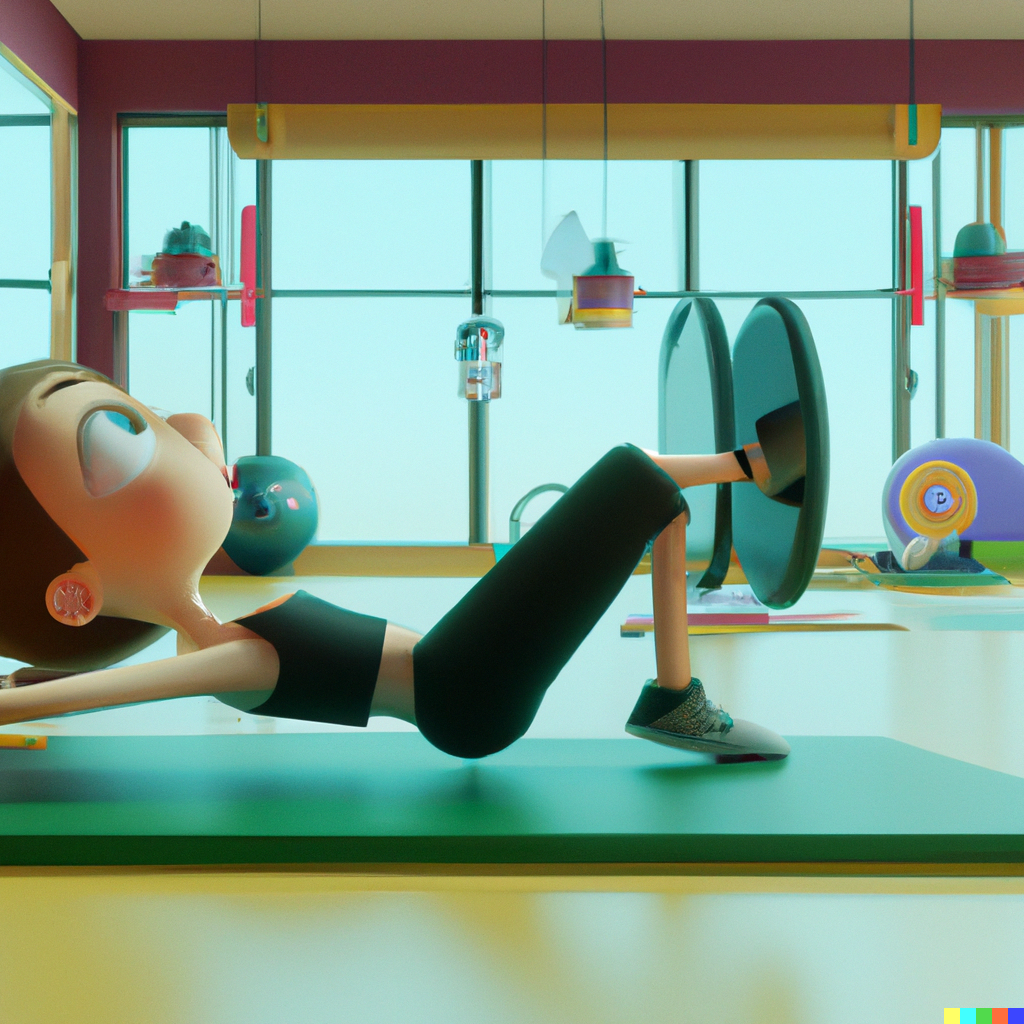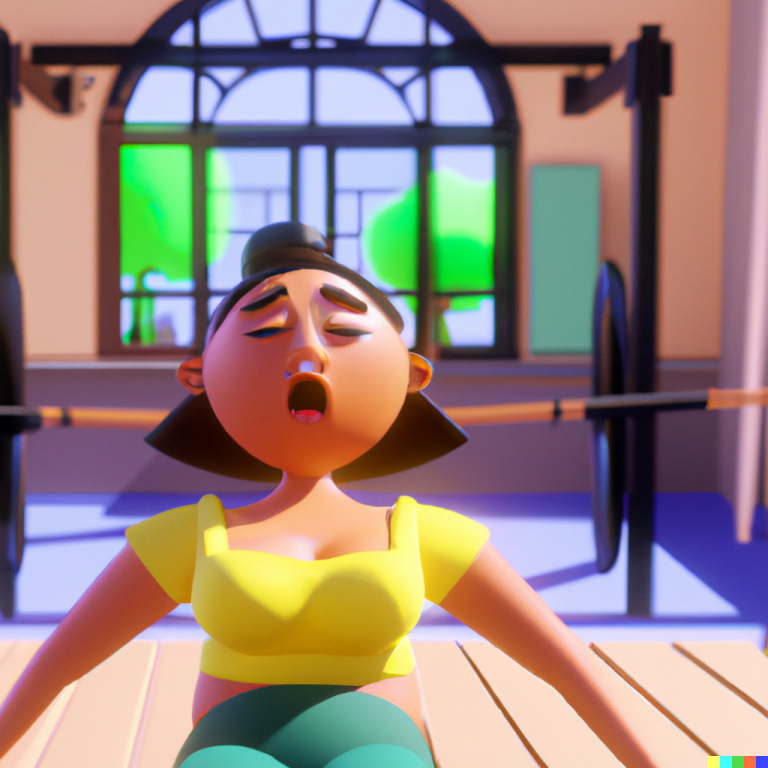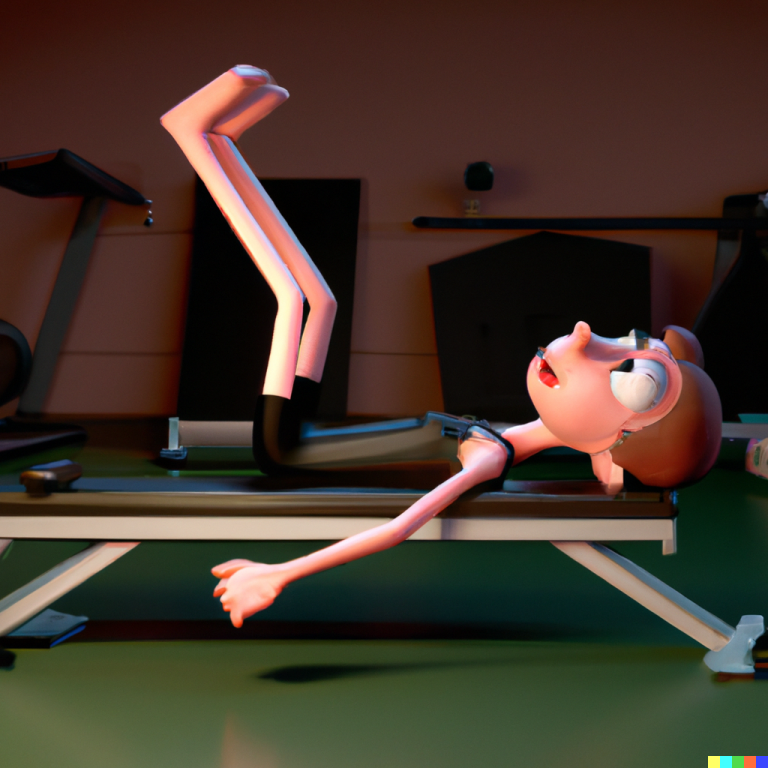
What is Pilates?
Pilates is a form of exercise that emphasizes the use of the body’s core muscles to improve overall strength, flexibility, and balance. It is a low-impact form of exercise that is suitable for people of all ages and fitness levels, and it is often used as a rehabilitation method for injuries and chronic conditions. The exercises are typically performed on a mat or on specialized equipment, and they are often focused on controlled movements and breathing.
Can you give a few examples of exercises?
Sure, here are a few examples of Pilates exercises:
- The Plank: This exercise strengthens the core, shoulders, and back. Start in a push-up position with the hands directly under the shoulders, keep the back straight and engage the abdominal muscles to hold the position for a few seconds.
- The Hundred: This exercise strengthens the core and improves coordination. Lie on your back with your knees bent and feet flat on the floor. Lift your head and shoulders off the mat and pump your arms up and down while holding your abs tight.
- The Roll-Up: This exercise strengthens the abs and improves flexibility. Lie on your back with your arms extended overhead and your knees bent. Slowly lift your head and shoulders off the mat, reaching towards your toes. Lower yourself back down, one vertebra at a time.
- The Single Leg Circle: This exercise strengthens the hips, thighs, and abs. Lie on your back with your legs in the air, and one leg at a time, make a circle with your foot.
- The Saw: This exercise strengthens the spine and improves flexibility. Sit with your legs spread wide and your arms stretched out. Twist your torso to reach your opposite hand to the ankle of the opposite leg and return to center. Repeat on the other side.
- These are just a few examples of Pilates exercises, there are many more that can be done. It is important to consult a certified Pilates instructor to learn proper form and to make sure that the exercises are appropriate for your fitness level and any physical limitations you may have.
What is wall Pilates?
Wall Pilates is a form of Pilates that utilizes a wall as an exercise aid. It is a low-impact and gentle form of exercise, making it suitable for people of all ages and fitness levels, particularly for those who have mobility or balance issues.
Wall Pilates exercises typically involve using the wall for support, resistance, or alignment. For example, exercises such as wall squats, wall push-ups, and wall planks can be used to work on strength and stability, while exercises such as wall stretches and wall-assisted yoga poses can be used to improve flexibility.
One of the main benefits of wall Pilates is that it allows for proper alignment and form during exercises, which can help to prevent injury. Additionally, using the wall as an aid can make some exercises more accessible for people with mobility or balance issues, allowing them to participate in a safe and effective workout.
It is important to note that just like traditional Pilates, it is recommended to consult with a certified Pilates instructor before starting to practice Wall Pilates, to learn the proper form and technique, and to make sure that the exercises are appropriate for your fitness level and any physical limitations you may have.
Can you describe a few wall Pilates exercises?
Sure, here are a few examples of wall Pilates exercises:
- Wall Squat: Stand with your back against a wall, with your feet hip-distance apart. Slowly lower your body, as if you were sitting in a chair, until your thighs are parallel to the ground. Hold this position for a few seconds, then slowly rise back up to the starting position. This exercise works on the legs and glutes.
- Wall Push-Up: Place your hands on a wall, shoulder-width apart, and step your feet back so that your body forms a straight line from head to heels. Lower your body by bending your elbows, then push back up to the starting position. This exercise works on the chest, shoulders, and triceps.
- Wall Plank: Start in a push-up position with your hands on the wall and your feet hip-distance apart. Keep your body in a straight line and hold this position for a few seconds. This exercise works on the core, shoulders, and back.
- Wall-Assisted Bridge: Lie on your back with your feet against a wall, and your knees bent. Use your glutes and core to lift your hips up towards the ceiling, hold the position for a few seconds, then lower your hips back down to the mat. This exercise works on the glutes and lower back.
- Wall-Assisted Yoga Poses: Using the wall as a support, you can do yoga poses that involve stretching and balancing, such as the Half-moon, the Tree Pose and the Warrior II. This exercise works on flexibility and balance.
These are just a few examples of wall Pilates exercises. It is important to note that just like traditional Pilates, it is recommended to consult with a certified Pilates instructor before starting to practice Wall Pilates, to learn the proper form and technique, and to make sure that the exercises are appropriate for your fitness level and any physical limitations you may have.
What is Pilates?
For how long it is recommended to do wall Pilates on a daily bases to strengthen your body?
It is recommended to aim for at least 20-30 minutes of wall Pilates exercises per day, in order to see the benefits of strengthening your body. However, the duration and frequency of your workouts will depend on your overall fitness level, your goals, and any physical limitations you may have.
If you are new to wall Pilates or have been inactive for a while, it is recommended to start slowly with shorter sessions, and gradually increase the duration and intensity of your workouts as your body adapts. It is also important to listen to your body, and to avoid pushing yourself too hard too soon.
It’s also important to note that it’s not only about the duration of the exercises, but also about the quality of it and about the consistency, doing it regularly with proper form and technique. Even if you can only spare 10-15 minutes a day, that is still better than doing nothing at all.
It’s also important to combine Pilates with other forms of exercise, such as cardio and strength training, to achieve a well-rounded fitness routine and to target all the different muscle groups in your body.
It is also important to consult with a certified Pilates instructor, who can help you create a personalized workout plan that is tailored to your fitness level and goals.





